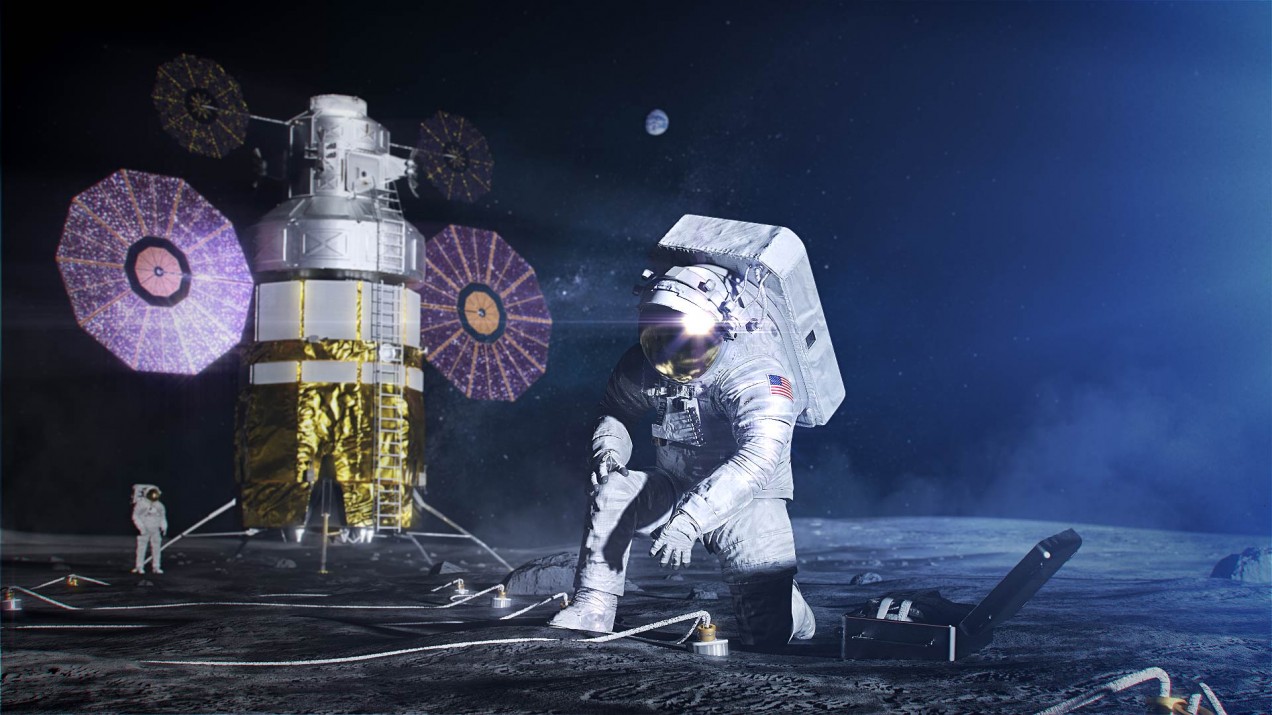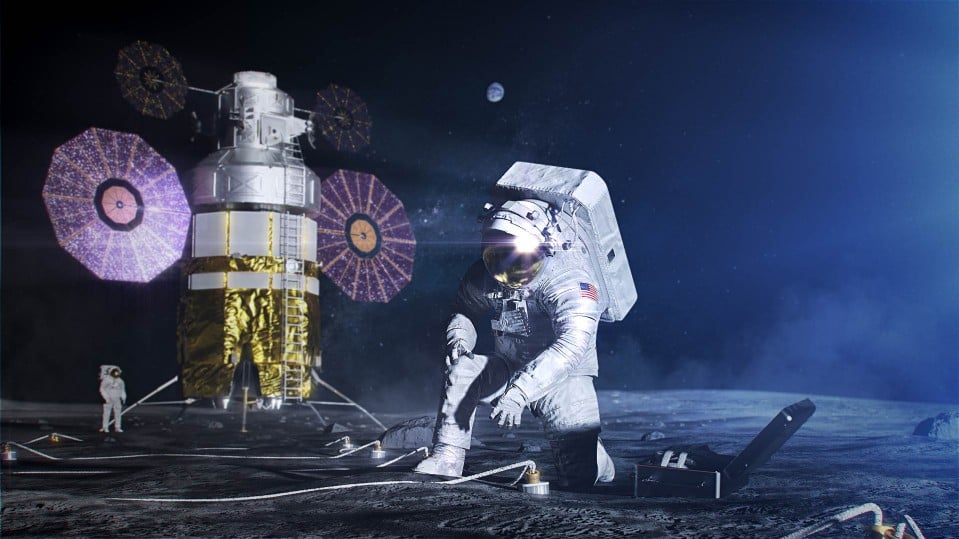


NASA’s bid to return humans to the surface of the moon in 2024 is far from a sure thing. The Artemis program, started at the behest of the Trump administration, is being dogged by delays, cash shortfalls, and the absence of a real step-by-step plan. There is a strong possibility the mission will be delayed to 2025 or later, or that congressional leadership will force NASA to change its human exploration agenda yet again.
But NASA isn't the only one planning a moon trip. Many other countries and private companies are eager to get in on the excitement. For some, space exploration is still a powerful amplifier for prestige and glory. For many others, however, the moon rush really is a scramble to prospect for valuable lunar resources before others can. Water ice reserves could be harvested into propellant that makes travel through deep space vastly less expensive. Helium-3, extremely rare on Earth, could help power future spacecraft. Rare or precious metals important to helping us run new technologies could be more easily accessible on the moon than anywhere on Earth.
Over the next few years, we’ll see the launch of more than a dozen different lunar missions. Some will just orbit or loop around the moon, some will land, some will deploy rovers and other robots for deeper exploration. Many are tasked with prospecting for water ice and other resources. And all of these missions are just a prelude for a permanent human presence on the moon, and establishing a pit stop for traveling to Mars.
NASA: Artemis 1, Late 2020
Artemis 1 is basically a test on two fronts: it’s the inaugural launch of NASA’s Space Launch System (which will be the heaviest rocket in the world and literally move the agency’s deep space exploration missions forward) and the first real deep-space test of the Orion crew capsule, which will spend six days in lunar orbit. Though it will be crewless, a number of low-cost experiments are going up on Artemis 1. Many will study the lunar environment, such as measuring radiation levels or how dust behaves during landing sequences. The most exciting, however, will attempt to pinpoint locations of exposed water ice on the surface.
(Fair warning: given the awful track record for SLS development, there’s a pretty good chance we’re going to see the launch date slide into 2021.)
China: Chang’e 5 and 6, Late 2020 and 2023
China’s remarkably successful Chang’e lunar exploration program shows no signs of slowing down. If successful, Chang’e 5 will be China’s third successful spacecraft landing on the moon. Though not a rover like the previous two Chang’e iterations, this will be the country’s first sample-return mission, bringing back at least two kilograms of lunar material from two meters below the surface. Chang’e 6 is really just a redux of this same sample-return mission, although it will most probably include additional scientific payloads to study the lunar soil and atmosphere.
India: Chandrayaan-3, 2021
This will be India’s third lunar mission, and its second attempt at landing a spacecraft on the moon. The national agency suffered a setback last year when Chandrayaan-2’s lander, Vikram, failed to slow down during its descent and crashed into the lunar surface.
In the wake of that failure, the Chandrayaan-3 mission plan will re-attempt a soft landing. Because Vikram (and its rover) were expected to run investigations that would help characterize the water ice reserves at the lunar south pole, it’s expected Chandrayaan-3 will carry out these same studies. Should India stick the landing, it will be just the fourth country in history to put a spacecraft on the surface of the moon.
Russia: Luna 25, 26, and 27; July 2021, 2024, and 2025
The last mission under the Luna program was in 1976, when the world still had a Soviet Union. Eager to make sure it’s got a stake in the 21st-century moon rush, Russia is resurrecting the program with a slate of new missions focused on enabling future mining operations. Luna 25 will prove out new landing technologies and drill into the surface of the south pole to study the composition of the moon’s soil for water ice, helium-3, carbon and nitrogen, precious metals, and any other interesting resources. Luna 26 is an orbiter that will survey the landscape from above to try to get a sense of where these resources might lie. And Luna 27 is another lander headed to the south pole to specifically prospect for water ice.
Astrobotic and Intuitive Machines: CLPS 1 and 2, July 2021
Many US space companies are eager to expand their operations and participate in various lunar activities, whether it’s mining or tourism or research. A key goal for NASA is to use Artemis to provide the private sector opportunities to go to the moon. Under the Commercial Lunar Payload Services (CLPS) initiative, private companies will deliver dozens of NASA-sponsored and privately developed science and tech payloads to the lunar service. The first two missions, launching in July 2021, will send Astrobotic Technologies’ Peregrine lander and Intuitive Machines’ Nova-C lander, respectively. Both will deliver a plethora of probes, robots, and rovers to look for water ice and other resources, and test technologies critical to robotic and crewed Artemis missions later in the decade.
ispace and Draper Lab: Hakuto-R Mission 1 and 2, October 2021 and 2023
Japanese company ispace is no stranger to big ideas (it once suggested putting a giant billboard on the surface of the moon), but it hasn’t had much success in actually getting off the ground. Its lunar program, Hakuto-R, is now being run in a partnership with Draper Labs. The two companies plan to launch a lunar lander in October 2021, and a lander and a rover combo in March 2023. Both missions will seek to validate the landing technologies of the spacecraft, and scout for potential water ice and key resources that could be mined.
PTS: ALINA, 2021
German company Planetary Transportation Systems (PTS) is not in good shape. The company recently filed for bankruptcy protection amidst bad losses in recent years. It hasn’t given up on ALINA, its lunar lander prototype. This won’t be a lengthy mission—PTS just wants to prove its technologies work and it can get to the moon in one piece. But ALINA will include two rovers built by Audi, and a miniature biosphere to grow plants.
Japan: SLIM, January 2022
This will be Japan’s first mission to the lunar surface. If JAXA is keen to play an important role in the moon rush of the decade, this mission is critical in demonstrating the agency has what it takes to actually land safely. SLIM (Smart Lander for Investigating Moon) will use the same technologies that power facial recognition systems to recognize lunar craters and determine its location as it attempts to touch down near the Marius Hills Hole. Thought to be an ancient lava tube that’s almost 300 feet deep, the hole could provide protection from radiation for a future human outpost. A lunar rover with two inflatable wheels might hitch a ride on this mission and explore this mysterious tunnel.
South Korea: KPLO, July 2022
This will be South Korea's biggest step forward into the world of space exploration. Using six different instruments, KPLO (Korean Pathfinder Lunar Orbiter), the country’s first lunar probe, will work to map out the presence of natural resources on the moon (water ice, helium-3, precious metals, etc.) from orbit.
NASA: VIPER, 2022
NASA plans to use the CLPS initiative to get some sense of what the water ice environment on the moon looks like, but VIPER (Volatiles Investigating Polar Exploration Rover) is the mission that will explicitly prospect for those resources. Armed with a one-meter drill and three spectrometers, the golf-cart-size rover will trudge around the south pole—in darkness and under sunlight—and figure out what are the most encouraging locations for water ice reserves in the region.
NASA: Artemis 2, Late 2022
Though Artemis 3 is the mission that aims to actually return humans to the surface, its immediate predecessor is still exciting. For the first time since Apollo 17, astronauts will leave Earth’s orbit. Artemis 2 will be a lunar flyby—a test to ensure that Orion can safely take humans to deep space and back. The mission will almost certainly take up a slew of small secondary payloads for various science experiments, but the trip around the moon and its far side is the banner spectacle to watch.
SpaceX: #dearMoon project, 2023
Back in 2017, Japanese billionaire Yusaku Maezawa inked a deal with SpaceX to ride a Crew Dragon spacecraft around the moon. That flight was put on hold as plans for expanding the Falcon Heavy rocket’s activities shrank and Starship development took prominence. Now, Maezawa and six to eight artists of his choosing will get to take that trip around the moon. There are plenty of caveats to keep in mind (Starship is still under development and has yet to actually fly, and SpaceX notoriously changes its plans on a whim). But if this mission actually happens, it will be the first instance of lunar tourism in history, and also cement SpaceX’s position as the world’s preeminent private space company.